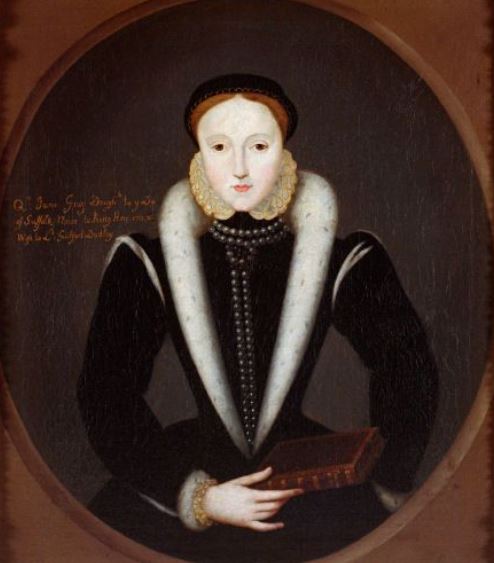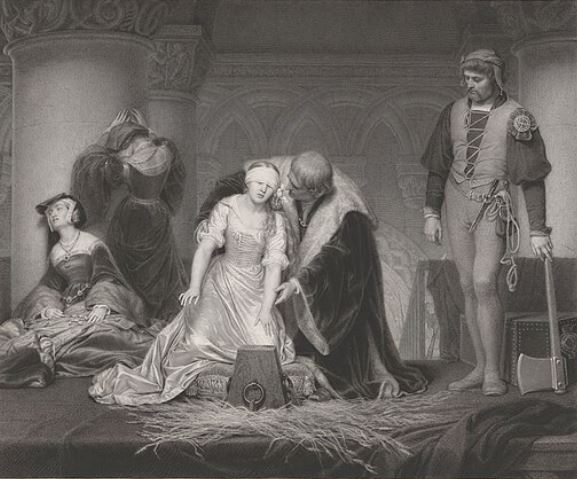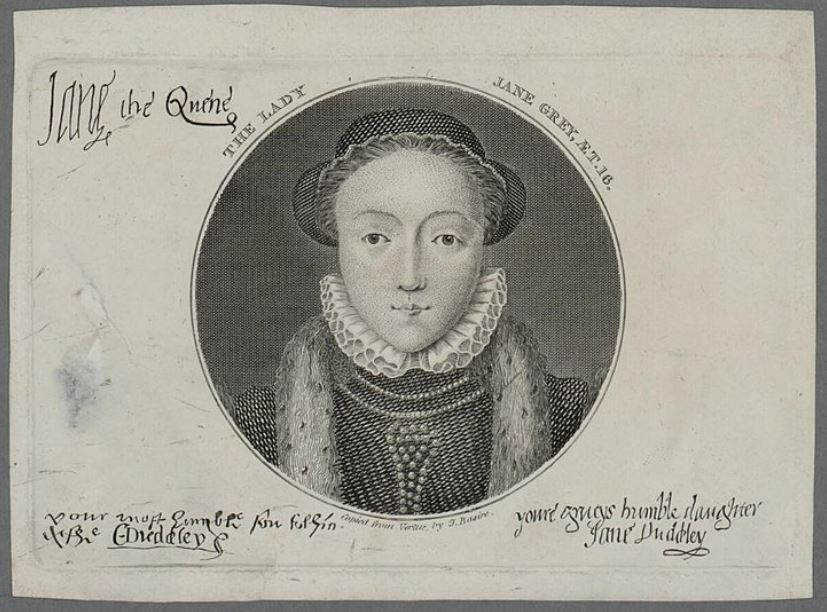Lady Jane Grey, often called the “Nine Days’ Queen,” is a tragic figure in Tudor history.
Her brief reign and subsequent execution for treason have fascinated historians for centuries.
This article explores the complex reasons behind Lady Jane Grey’s accusation of treason. We’ll delve into the Tudor dynasty politics, religious conflicts, and power struggles that led to her downfall.
1. The Tudor Succession Crisis
Edward VI ascended to the throne at a young age. As a Protestant, he sought to secure a Protestant succession.
However, his illness in 1553 would spark a succession crisis.
Edward created the “Devise for the Succession” to ensure that the throne would bypass his Catholic half-sister Mary. This legal document aimed to place his Protestant cousin, Lady Jane Grey, on the throne instead.
The succession crisis highlighted the deep religious divide in England at the time. Protestants feared a return to Catholicism under Mary, whilst Catholics saw Mary as the rightful heir. This religious tension would play a crucial role in Lady Jane’s fate.
2. The Key Players in Lady Jane Grey’s Story
Lady Jane Grey was known for her intelligence and strong Protestant faith. She also received an excellent education, unusual for women of her time.
Despite the pressure, Lade Jane Grey was reluctant to claim the throne, but she would eventually agree.
The Duke of Northumberland was the driving force behind Jane’s accession. As Edward VI’s chief minister, he wielded significant influence.
It was the Duke of Northumberland that would arrange Jane’s marriage to his son, Guildford Dudley.
Mary Tudor was Henry VIII’s eldest daughter, and had a strong claim to the throne. She was a devout Catholic with widespread support among the populace.
Elizabeth, Mary’s half-sister, was also in line for succession but remained in the background during this crisis.
3. The Plot to Place Lady Jane on the Throne

The death of Edward VI on July 6, 1553, set in motion a series of events that would lead to Lady Jane Grey’s brief reign and ultimate downfall.
The Duke of Northumberland, aware of the delicate nature of the situation, made a crucial decision. He kept the young king’s death a secret for several days. This secrecy bought him valuable time to set his plans in motion.
During this period, Northumberland worked tirelessly to secure Lady Jane’s position.
He met with key members of the Privy Council, persuading them to support Jane’s claim to the throne.
His arguments centered on Edward’s “Devise for the Succession” and the need to maintain a Protestant monarch.
The Duke of Northumberland also took steps to control the spread of information, ensuring that news of Edward’s death didn’t reach Mary Tudor prematurely.
On July 10, 1553, four days after Edward’s death, Northumberland felt ready to act. Lady Jane Grey was formally proclaimed ‘Queen of England’. The announcement was made at various locations across London, including the Tower of London and St. Paul’s Cathedral.
The proclamation sent shockwaves through the country. Many were taken aback by this sudden change in succession.
The common people, who had long expected Mary to succeed Edward, were particularly confused and unsettled. Questions arose about the legality and legitimacy of Lady Jane Grey’s claim.
Interestingly, Jane herself was reportedly reluctant to accept the crown.
Contemporary accounts suggest that she was initially shocked and distressed when informed of her new status. Jane would have been acutely aware of the dangers inherent in challenging Mary’s claim to the throne.
Despite her reservations, Jane eventually succumbed to the pressure placed upon her. Northumberland’s influence, combined with the persuasion of her parents and husband, proved decisive.
At just sixteen years old, Lady Jane Grey found herself at the center of a high-stakes political gambit.
The days following the proclamation were tense.
Northumberland attempted to consolidate power quickly, knowing that time was of the essence. He dispatched forces to intercept Mary, who had already begun gathering support.
Meanwhile, Jane was moved to the Tower of London – not as a prisoner, but as the traditional residence of monarchs before their coronation.
As news spread across the country, reactions were mixed. Some accepted the change, while others remained skeptical or openly opposed. The stage was set for a confrontation that would determine the future of the English monarchy and the fate of Lady Jane Grey.
4. The Nine Days’ Queen
Lady Jane Grey’s reign lasted a mere nine days.
Throughout her brief tenure, Jane never left the confines of the Tower of London. This ancient fortress, traditionally a place of royal residence before coronations, became a symbol of her isolated rule.
Despite Northumberland’s efforts, public support for Jane was tepid at best.
Many viewed her as a usurper. Her royal blood, while significant, did little to sway public opinion in her favor.
As news of Edward’s death spread, Mary Tudor acted swiftly.
She fled to East Anglia, a region known for its Catholic sympathies. There, she began to gather supporters and troops. Mary’s decisive actions stood in stark contrast to Jane’s confinement in the Tower.
Public sentiment shifted rapidly in Mary’s favor.
Her status as Henry VIII’s daughter and her unwavering claim to the throne resonated with many. Towns and nobles across England began declaring for Mary, abandoning their earlier reluctant support for Jane.
Northumberland’s attempt to intercept Mary with military forces failed dismally. His troops, sensing the changing tide, began to desert.
Support for Jane’s claim crumbled with alarming speed.
On July 19, just nine days after Jane’s proclamation, Mary was declared Queen in London.
Jane’s reign ended as abruptly as it had begun. She was swiftly stripped of her royal title and became a prisoner in the very tower where she had briefly ruled as Queen.
5. The Accusation of Treason
In Tudor England, treason was considered the gravest of crimes.
The definition encompassed a wide range of acts against the monarch and the state. These included attempting to overthrow the ruler, altering the line of succession, or even imagining the king’s death. The punishment for treason was severe: death, usually by beheading for nobles.
Lady Jane Grey’s acceptance of the crown, however reluctant, placed her squarely within this definition of treason.
By allowing herself to be proclaimed queen, she had effectively challenged Mary’s right to rule. This act, regardless of Jane’s intentions or the influence of others, was treasonous under Tudor law.
The Privy Council’s role in this affair was particularly significant.
Initially, they had supported Jane’s claim to the throne. However, as Mary’s support grew, they swiftly changed allegiance. On July 19, 1553, the same day Mary was proclaimed queen, the Council declared for her. They promptly ordered the arrest of Jane, her husband Guildford Dudley, and the Duke of Northumberland.
The legal basis for charging Jane with treason was clear and incontestable under Tudor law.
Her brief reign, once seen as a righteous Protestant succession, was now recast as a treasonous usurpation. The speed with which former allies turned against Jane highlights the precarious nature of Tudor politics.
Jane’s youth and her apparent reluctance to take the crown did little to mitigate the seriousness of the charge. In the eyes of the law, and of the new Queen Mary, Jane had committed treason of the highest order.
6. Lady Jane Grey’s Arrest and Execution

Following their arrests, Lady Jane Grey and her husband, Guildford Dudley, were confined to the Tower of London.
This fortress, once the site of Jane’s brief reign, now became her prison.
In November 1553, the couple faced trial for high treason. The proceedings were swift and the outcome predetermined. Both were found guilty and sentenced to death.
Queen Mary, perhaps out of familial sympathy or political calculation, initially showed mercy. She spared Jane’s life, likely intending to keep her imprisoned rather than executed. This clemency, however, proved short-lived.
In January 1554, Sir Thomas Wyatt led a Protestant rebellion against Mary’s rule. Although Jane played no part in this uprising, it sealed her fate. Mary and her advisors saw Jane as a rallying point for future Protestant rebellions.
On February 12, 1554, both Lady Jane Grey and Guildford Dudley were executed.
The consequences for the Dudley family were severe. The Duke of Northumberland, the architect of Jane’s ill-fated reign, was executed shortly after Mary took the throne.
Other supporters of Jane’s claim also faced punishment. Some were executed, while others were imprisoned or fined. The aftermath of Jane’s “reign” saw a significant reshuffling of power at court, as Mary sought to secure her position and eliminate potential threats.
Jane’s execution marked the beginning of Mary’s bloody efforts to restore Catholicism in England.
7. Final Thoughts on Lady Jane Grey
Lady Jane Grey’s accusation of treason stemmed from a complex web of factors. Tudor dynastic politics, religious conflicts, and personal ambitions all played a role.
Her brief reign and tragic end highlight the dangerous nature of Tudor politics.
Jane’s story serves as a cautionary tale about power and succession. It also illustrates the deep religious divisions of 16th-century England. The legacy of the “Nine Days’ Queen” continues to intrigue and educate us about this turbulent period in English history.
Further Reading
If you enjoyed this article, you may enjoy these:
- Kings and Queens of England Ranked from Worst to Best
- How did Charlemagne improve the lives of people in Europe?
- Why was the crowning of Charlemagne so important?
- How President Andrew Jackson Caused the Economic Crisis of 1837
- Who were the Main Dictators of World War 2?
- Why did General Robert E. Lee surrender at Appomattox?
You may also enjoy these articles about British history:







